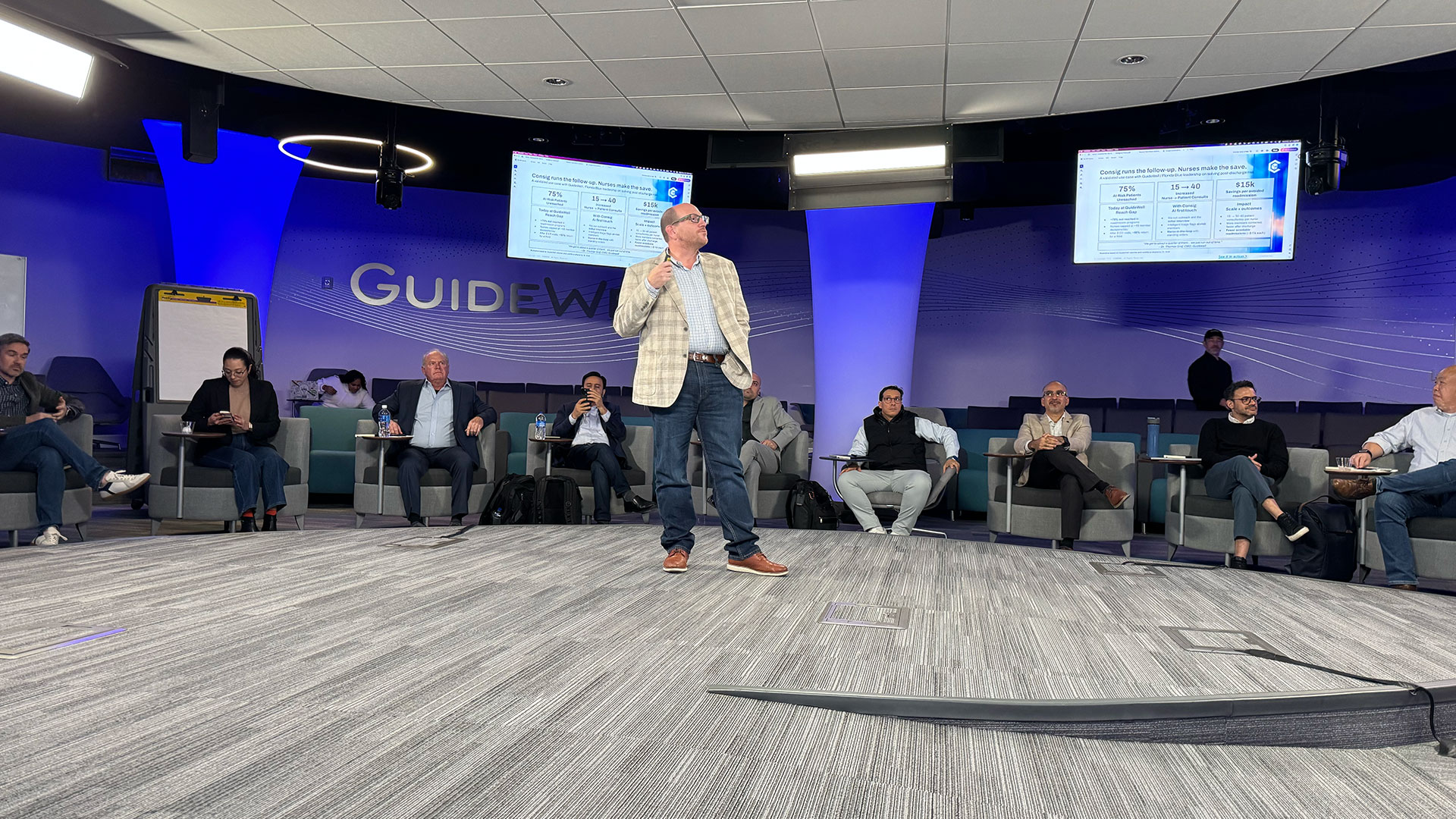
Rather than focusing solely on prescribing workflows, RJ asked a simple question: “Can we talk about something even more urgent?”
That question opened the door to a discussion about a problem that is costing health plans billions—and costing patients their lives.
The Pattern No One Can Ignore
In speaking with clinical leaders at GuideWell2, RJ learned something striking:
GuideWell knows this. They employ a team of dedicated nurses whose sole job is to follow up with these high-risk members.
But here’s the problem: 75% of these patients are never reached.
Not because of lack of care.
Not because of lack of effort.
But simply because nurses spend their days calling, not connecting.
RJ shared it candidly: “I don’t know about you, but when I’m discharged from the ER, do I follow the instructions well? Terribly.”
Patients don’t schedule their MRIs.
They forget labs.
They skip follow-ups.
This is the human condition. And it’s precisely why follow-up matters.
The Case for AI-Accelerated Outreach
The belief behind Consig is simple:
If we can automate follow-up and extend nurse capacity, we can save lives—and save money.
Every unreadmitted high-risk patient reduces clinical risk and prevents unnecessary spend.
But to catch issues early, nurses need to talk to patients—many more than the current model allows.
Today, a nurse may reach 15 patients in a day.
With the right automation, RJ believes they can reach 30, 40, even 45.
Not by replacing nurses.
But by letting technology handle what technology is good at.
What Consig AI Does Today
RJ explained it clearly:
Consig’s AI agent runs the first part of the workflow:
All the tasks that consume nurse time, but require no clinical judgment.
“We don’t want to replace nurses. Healthcare is human.
We want to maximize nurse impact.”
The result: clinicians spend their time actually helping patients, not navigating voicemails and phone tag.
A Million Conversations a Year — Already Running
RJ highlighted that this workflow is not hypothetical.
Consig is already powering over a million follow-up conversations per year for claim processes with a partner today.
This is real, scaled, operational healthcare automation.
The Demo: Real Voice Automation at Work
RJ showcased a live demo illustrating what Consig’s agent can do:
It wasn’t a theoretical mock-up—it was a functioning workflow similar to the one already deployed in the field.
Why AI Alone Isn’t Enough: The Compliance Trap
RJ addressed a risk nearly every investor in the room has seen:
“Throwing a GPT API at healthcare conversations is a trap.”
Large language models hallucinate.
They mix patient data when they shouldn’t.
They overstep compliance boundaries without realizing it.
Consig avoids this by orchestrating multiple layers of AI:
✔️ Deterministic dialogs
For identity verification, intake forms, medication reviews, structured data collection
✔️ NLU
For intent mapping and controlled understanding
✔️ Generative AI
Used only where appropriate—like scheduling or conversational smoothing
and only with minimal, segmented data exposure
Consig gives each AI component only what it needs, nothing more.
This is one of Consig’s core differentiators:
a compliance-centered, multi-engine AI architecture built for regulated healthcare.
The Mission: Let Nurses Talk to More Patients
RJ ended with the human point: Consig isn’t trying to automate clinical care.
It’s automating the friction around care—so care teams can reach more of the patients who need them most.
More follow-ups.
More conversations.
More chances to intervene early.
More lives saved.
That’s the work Consig is doing right now, and so much more for the future of Healthcare.
( 1 ) Plug and Play is one of the world’s largest innovation platforms, connecting startups with major corporations, investors, and industry leaders. They run accelerator programs across the globe to help emerging companies validate ideas, gain industry exposure, and scale faster. Presenting at Plug and Play means being recognized by a highly selective ecosystem focused on real-world innovation.
( 2 ) GuideWell is one of the largest health solutions organizations in the United States and the parent company of Florida Blue. They operate extensive health insurance, clinical care, and patient support networks, making them a key player in shaping healthcare models and outcomes. Insights from GuideWell carry significant weight because they reflect real, system-wide patient and operational challenges.